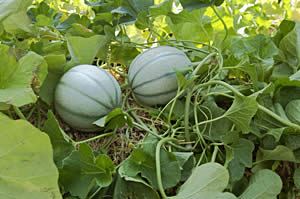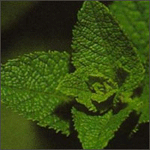
OGM : domestication et amélioration des plantes (1/3)
Les plantes OGM sont toujours sujettes à controverse en France. Après un moratoire de trois mois, le gouvernement a décidé de geler les cultures de maïs MON 810 en 2008. Une mesure pour rassurer l’opinion ? En tout cas, les scientifiques voient dans cette technologie une réelle avancée, non une menace pour l’avenir. Ils se réunissaient lors d’un colloque à l’Académie des sciences en septembre 2008. Nous vous proposons d’écouter une sélection d’interventions.
_ « Le monde végétal s'ouvre aux biotechnologies », tel était l'intitulé de ce colloque international les 15 et 16 septembre 2008 à l'Académie des sciences, rassemblant scientifiques, philosophe et cultivateurs.
La langue officielle était l'anglais, mais certains intervenants ont fait le choix de s'exprimer en français. C'est la raison pour laquelle vous trouverez les deux langues dans cette retransmission.
- Tilling, a new tool for the genetic improvement of crops / Le "tilling", nouvel outil pour l'amélioration génétique des cultures
Abdel Bendahmane
URGV (Unité de Recherche en Génomique Végétale), INRA

Le TILLING (Targeting Induced Local Lesions IN Genomes) est une méthode de génétique inverse, basée sur la capacité d'une endonucléase à détecter les mésappariements dans un double brin d'ADN et à couper à leur niveau. Les mésappariements surgissent lorsque deux brins d'ADN ne possèdent pas la même séquence, créant ainsi des hétéroduplexes lors de leur appariement. Cela permet de détecter des points de mutation uniques induits par une mutagénèse chimique.
Cette technique permet l'identification d'une série d'allèles pour 1 gène donné et peut être adaptée à un screening à haut débit de mutations induites par l'EMS ou de variations génétiques naturelles.
Concrètement, cette méthode permet par exemple de rendre vos tomates plus rouges, de mieux résister aux virus. Quant au fleurs de melon (rare espèce à posséder des plants mâles et des plans femelles), les scientifiques réussissent par cette technique à les rendre hermaphrodites. Plus de souci pour le cultivateur qui aurait peur de n'avoir dans son champs que des fleurs, sans le fruit.

« In the genomic era, the completion of the sequencing of several plant genomes has enabled the development of reverse genetics strategies, where one first identifies a target gene based on the functional annotation of its sequence, and then proceeds with the phenotypic characterisation of mutant alleles. Several mutagenesis techniques are dedicated to this approach, notably RNAi suppression and insertional mutagenesis, by transposon tagging or Agrobacterium T-DNA insertion. Those methods, however, are still mainly based on Agrobacterium T-DNA vectors, and thus rely on the ability of a given plant species to be
transformed. On the other hand, chemical mutagenesis based on an alkylating agent like ethylmethane sulfonate (EMS); provides an easy and cost-effective way to saturate a genome with mutations.
TILLING (Targeting Induced Local Lesions IN Genomes) uses EMS mutagenesis coupled with a gene-specific detection of single-nucleotide mutations. The success of the TILLING approach relies on the construction of high quality mutant libraries. Ideally, the mutant population is phenotyped so that in silico analysis of the mutant lines could be carried out.
We have constructed EMS-mutant population for pea, tomato and melon under controlled conditions and developed a database, UTILLdb, which presents phenotypic data based on visual characterization of M2 plants. A hierarchical categorisation of mutant phenotypes was used to describe the mutant plants. To facilitate the phenotype description, digital images were also recorded. A critical aspect in implementing the TILLING approach is the choice of mutation detection methods that are designed to screen large stretches of DNA without reducing diagnostic sensitivity or specificity. Previously, we reported the biochemical analysis of five S1 type nucleases from Arabidopsis thaliana. We demonstrated that one of them, ENDO1, is a mismatch specific endonuclease, which cleaves with a high efficiency all types of mismatches and has a high sensitivity, detecting one allele in pool of sixty. ENDO1 system could be also exploited in wide range of mutation diagnostics tools.
In order to exploit the mutant population using reverse genetics, genomic DNA was prepared from the mutant lines via high-through put automated protocols and organized in pools for bulked screening. Individuals mutated in the gene of interest were isolated by
systematic pool deconvolution. Genes and mutations were integrated in UTILLdb through a web interface, which allows for global analysis of TILLING mutants. This database also serves as a portal for users to request materials or TILLING experiments. We have selected, for each crop, a list of agronomic traits to be studied by TILLING.
These traits have impact on functional properties of the harvested plant for use in food, animal feed, or industrial products. Examples of these agronomic traits include fruit quality in tomato, increase of plant biomass, enhanced disease resistance, and modification of the sex of the
plant to facilitate plant breeding. The identification and the haracterization of such mutants will be discussed. »
- What should we do with agrochimicals : use them or ban them ? / Que faire avec les pesticides : les utiliser ou les interdire ?
Jean-Pierre Decor
Institut des Sciences du Vivant, Aventis

Les agriculteurs doivent utiliser des pratiques permettant de maintenir leurs cultures en bonne forme, tout en préservant l’environnement… une tâche délicate à laquelle s’intéresse Jean-Pierre Decor.
De 1850 à 1950, le problème principal consistait à éviter les famines. C’est l’époque du souffre sur les pêchers, du sulfate de cuivre (encore utilisé de nos jours) et des sels d’arsenic.
En 1940, arrive, le DDT (dichlorodiphényltrichloroéthane), un insecticide qui fera longtemps parler de lui. En 1962, en effet, la biologiste américaine Rachel Carson accusa le DDT d'être cancérigène et d'empêcher la reproduction des oiseaux en amincissant la coquille de leurs œufs. Dans les années 1970 le DDT est interdit dans de nombreux pays. Aujourd’hui, il est de nouveau utilisé, même s’il est encore sujet à controverse.
Pour les mauvaises herbes, Jean-Pierre Decor prône une utilisation modérée des phytosanitaires, mêlant à la fois herbicide à spectre large avec labour au sol par exemple.
Pour les insectes en revanche, la solution semble plus difficile. Les industriels travaillent actuellement sur les hormones d’insectes, et cherchent à faire des virus des insectes leurs meilleurs alliés. C’est à ce niveau aussi qu’intervient la technologie OGM : les scientifiques observent actuellement ce qui se passe dans les plantes naturellement répulsives pour l’appliquer génétiquement aux autres plantes.

Agricultural Mission :
Traditionally, delivering edible food (harvest) to ensure :
- Food for the population
- Income for the farmer
- The country's self-sufficiency in food production
And recently, with a minimum impact on the environment.
Means to achieve this mission :
- Growing crops in a favorable ecosystem (soil, temperature, humidity, sunshine)
- Selection of crops that are well adapted to this ecosystem
- Good cultivation practice : suitable varieties, equipment, fertilization...
- Effective protection against pests : weeds, insects, nematodes, fungi, viruses...
Pesticides today
«The fight against pests is a necessity which has emerged over the centuries with often very rudimentary means. To cope with disasters and to meet the needs of growing urban populations were
an absolute necessity whatever the means.
The first tools were :
- For fungicides : mercury salts, sulfur, copper derivatives,
- For insecticides : coal oil, arsenic and lead salts or plant extracts, such as pyrethre or nicotine,
- Sulfuric acid to control broadleaves on cereals : 80 to 120 litres of concentred sulfuric acid diluted in 1000 liters of water were needed for one hectare.
The progress of organic chemistry have contributed to progressively replace mineral products, sometimes highly toxic by more friendly products. In 1946, the launching of phytohormones as active
herbicides at 2-4 kgs per hectare was a true revolution !
Nevertheless, the intensive and repeated use of these chemicals has revealed a number of drawbacks mainly ecological such as longer life, excessive mobility in the soil, or side effects on wildlife. In addition some target pests or weeds developed a resistance. Such as sulfonyl ureas, discovered in the eighties that was efficient at the level of few grams per hectare. The dangerousness of pesticides for human beings was known from the early days but progessively environmental concerns were taken in consideration. Gradually legislation increasingly binding, not only on criteria of efficacy and low mammal toxicity, was
set up to issue authorizations for the application in the fields.
In response, new plant protection molecules, with a minimum impact on the environment, with more effective formulations, have been gradually introduced. Due to the efficiency and the selectivity of these new products applied doses were considerably reduced.
In addition the introduction of a toxin directly in the crop and seed treatment have allowed in some cases to remove the spray in the fields.
A strong political pressure
In 1987 the Brundtland report proposed the concept of “durable development” as a development corresponding to the present needs without jeopardizing the capacity for the future generations to
satisfy their own needs. Because of the image of pesticides in Europe and especially in France, the first agricultural country, there is an increasing political will to reduce pesticide use. The European law should tighten the conditions for approval of plant protection products. This regulation which must replace to the EC Directive 91/414, is still in the state of project.
The objective is to revise the procedures for evaluating the safety of active substances, to enhance protection of human health, animals and the environment. »
En savoir plus :
- Ecoutez les autres intervenants de ce colloque :
-* OGM : une solution à nos problèmes ? (2/3)
-* Doit-on craindre les OGM pour notre santé ? (3/3)
-* Luc Ferry : les dangers du "principe de précaution"
- Ecoutez également notre émission : OGM : pour ou contre ? deux visions différentes de scientifiques
- Résumés des interventions et vidéos sur le site de l'Académie des sciences